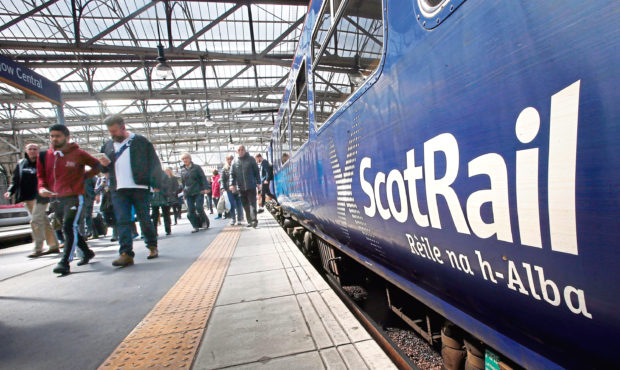The number of Scottish rail journeys taking place has dropped 95% amid the pandemic – with passenger numbers across the country now at their lowest level since the mid-1800s.
New estimates from the Office Of Rail And Road show just over one million train tickets were used on ScotRail services between April and June this year, when only essential travel was advised.
But these made up just 4.3% of the approximately 23 million journeys taken during the same period in 2019.
At the same time, however, the statistics show passengers’ trips have grown longer amid the pandemic.
During the three month period, the average distance travelled per ScotRail customer was up 23%.
When lockdown measures were first imposed in March, ScotRail made “significant” changes to its timetable in order to allow for enhanced cleaning and safety procedures to be carried out.
The vast majority of its services have since returned to normal and the operator has been running at full capacity during peak hours since the start of August.
ScotRail says passenger numbers remain down around 75% year-on-year.
A spokesman said: “These unprecedented times have had a huge impact on every sector, and the railway is no different.
“People have been listening to and following the government advice, and as a result we’ve seen fewer people choosing to travel.”
Across the UK, 35 million train journeys were made between April and June, representing 8.1% of those during the same period in 2019.
Overall passenger revenue for the three months was £184 million, far lower than the £2.7 billion recorded a year earlier.
Graham Richards, director of railway planning and performance at the Office Of Rail And Road (ORR), said: “This unprecedented fall in passenger numbers, the largest on record to levels last seen in the mid-19th Century, has clearly had an impact on both rail usage and also ticketing revenue.
“These figures include the period of lockdown and reassuringly we’re now seeing passenger numbers slowly increase.
“ORR has worked closely with the industry, and continues to do so, to ensure the necessary health and safety advice and guidance is in place.”
